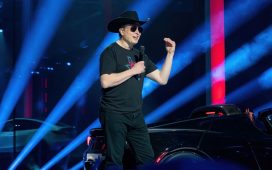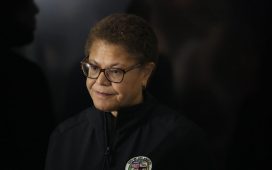Q: Your role includes oversight of world markets, including India, Europe, the Middle East and Africa. How do you decide your priorities?
A: The No. 1 priority I was given was to strengthen the North American market first, with the U.S. being the top priority, and then Central and South America. Then, right in the middle of that, COVID hit. Now the purpose is to get more focused on those markets and apply some of the best practices that have been successful in North America.
What are some of those best practices?
No. 1 is optimizing the supply. We’ve done a better job than some of our competitors in terms of production flexibility and prioritization of the models that are the most profitable and in the highest demand. We’ve also worked to maximize the mix of SUVs and tried to reposition the brand to a higher level with a better mix of trims and options. So we are selling [variants] with more technology, which are more attractive in the market but sold at a higher price.
We’ve also worked on optimizing our incentives, which has led to a significant improvement in the residual values of our brands. We’ve worked on strengthening the dealer network with the launch of Accelerate for Hyundai and Keystone for Genesis. We have worked on the deployment of digitalization, including the ability for consumers to go through the online shopping experiences through Amazon, for example.
Is there one effort that stands out as the most important?
I don’t believe in one solution — otherwise it would be very simple. It’s a combination of elements. If you only address one and you don’t address the others, you are always in trouble. But I would highlight one that I believe has been important: working together with our dealer network.
That has allowed us to set up the right programs in the market, which has led to the highest profitability ever. We know that all dealer networks have had improved profits during the pandemic. In fact, the Hyundai network has increased the most, and the Genesis network has also had a tremendous increase. I think that’s a key element. Not the only one, but it is a very important one, in my opinion.
Supply chain problems have caused disruptions all over the industry. What is Hyundai’s biggest supply chain challenge right now, and how are you overcoming it?
The chip shortage. As part of the strategic position of our brand, we want to focus on safety first, and all the latest and greatest technologies need to be made available to our cars, and all those come with chips.
We decided not to change any of the specs of our vehicles — unlike some of our competitors — and that was a significant challenge. Since we don’t want to compromise on the content, mainly the safety, we need to ensure that we are able to prioritize. So on a weekly — and sometimes daily — basis, we sit down with our team and make new production plans. We say, “This is what we’ve got, and this is how we can maximize the production.” And then we sacrifice model B or C by ensuring we always prioritize the models that we can maximize in terms of sales and profits.
Looking ahead, how do you think your manufacturing and distribution will be improved?
One of the learnings is we are better off operating with a much lower level of inventory, from an operations and dealer point of view. Because it’s more efficient and more profitable. Another learning point is that if you explain to consumers why they have to wait [for the vehicle], in many cases they are willing to wait a few weeks.
And another learning point is realizing that cars were built and designed in the past without considering the optimization of chips. If you needed more, that was up to the designer. But in the future, electronics design will lean to designs that deliver the same functionality to the consumer while the number of chips are optimized.
And one more learning point: We need to be more localized. We need to produce all the key components in the market where we’re delivering the vehicles. In the case of Hyundai, we’ve made a commitment to make a significant investment in the U.S. market — up to $7.4 billion within the group — to have more capacity and many other things.
When will Hyundai be back to full operations?
We see an improvement in the short term. Last month, we achieved our plan in our Alabama plant in terms of production, and that didn’t happen for many months — that’s already a good sign. So we see an improvement in 2022, and then if the trend continues, we may see a full recovery in 2023. But to be honest, I don’t want to be super optimistic because every time we made projections in the past, we ended up having a certain unpredictable impact on events.
We see the number of Hyundai group EV models growing, and we see the increase of new-vehicle registrations for EVs from Kia, Hyundai and Genesis. Is this a sustainable lead? How will Hyundai maintain its market position on EVs?
We have set very strict objectives when it comes to electrification because we believe in it. We want to sell 1.7 million EVs by 2026 as a group. We will launch 12 battery EV models through this period.
In addition to that, we want to ensure that we have a significant growth in electrified vehicles, which means not only BEVs, but also hybrids and plug-in hybrids. We believe those technologies are the first step for a lot of current ICE customers to move into a battery EV.
To that end — and by the end of this year — we expect to have 10 fully electrified vehicles in the portfolio. For example, Tucson. We will have a Tucson ICE, Tucson hybrid and a Tucson plug-in hybrid.
Same goes with Santa Fe and some others. The plan is supported by a very strong product portfolio, which will continue to grow.
We have already seen the good reaction to the market when we launched the Ioniq 5. Then we will launch Ioniq 6, and then Ioniq 7. The confidence is not overconfidence, it’s sustained by a very strong product portfolio and other associated plans.
In the U.S. there’s still somewhat of a disconnect between what automakers can deliver technologically and what consumers want. But recently it appears that the attitude toward buying EVs is shifting. How is the market psychology different now compared with, say, 2017?
There has been a huge change. No. 1, there is more product. Consumers have good options and they can buy different body types, in different prices and different types of technologies.
No. 2, there has been huge development in the infrastructure. Just five years back, it was very rare — if not difficult — to find charging stations.
Now there’s been a significant increase. In the near future, with support from the U.S. government, we’re going to see a significant increase in the density of high-voltage chargers. In the end those are the ones that matter most.
The third element is gas prices. Because of the different situations in the market, including the complex situation in Europe, we have seen such increasing gas prices that a lot of consumers are saying wow. Especially if, like Hyundai, you offer two years of free charging. Then it’s a very, very compelling proposition.
Those are the factors that I believe are playing in the U.S. market. Although America started at a little bit slower pace compared to maybe Europe and China, I think we’re going to see a fast adoption of electrification.







